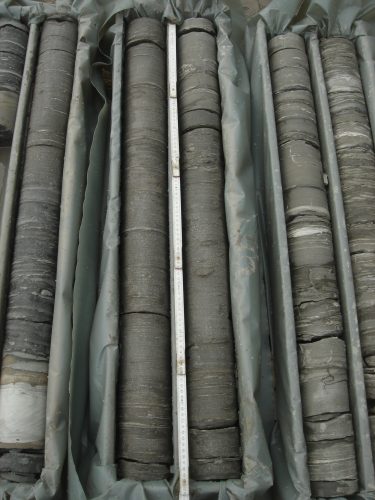A butterfly lands on top of a flower and draws nectar with its coiled mouthpiece; the butterfly and the flower seem to be an inseparable pair. For a long time, our understanding of the symbiotic relationship between the two organisms led scientists to believe that Lepidoptera, the order of insects that includes butterflies and moths, evolved alongside the first angiosperms or flowering plants. However, a group of researchers recently discovered new evidence that suggests that the evolutionary history of Lepidoptera and angiosperms may not be as simple as scientists had previously delineated.
Paul K. Strother, a researcher and professor at Boston College, visited microfossil paleontologist Bas van de Schootbrugge in Germany in 2012 in order to collaborate on the search for prehistoric remnants of freshwater algae. When the research team drilled into the Schandelah-1 well, however, they inadvertently uncovered enigmatic scales in sediments from the late Triassic and early Jurassic periods. While they deduced that these were insect scales, they were unable to immediately conclude which insects they belonged to because many different insects have wings lined with thousands of these kinds of scales. Thus, they had to develop a method to extract the infinitesimal and delicate scales from the sample in order to determine their origin.
Timo van Eldijk, an undergraduate at Utrecht University at the time, took charge of the laboratorial work. To isolate the scales, he exposed the sediments to harsh acids and then used a needle tipped with a piece of human nostril hair to transfer each one individually to a separate slide. He then examined the slides under a microscope and discovered that there were two types of scales in the sample: solid, round ones and hollow, jagged ones. By comparing the scales to previously classified specimens, van Eldijk determined that the solid scales belonged to the earliest Lepidoptera, who relied on mandibles or jawlike mouthparts to chew their food, corroborating the results of earlier insect evolutionary studies.
The discovery of the newfound hollow scales, however, revealed something truly remarkable. Because hollow scales are characteristic of extant, or currently living, Lepidoptera, specifically the Glossata, a suborder containing moths and butterflies that have an elongated feeding and sucking mouthpart called a proboscis, the discovery of these hollow wings in the sample suggests that moths and butterflies had already evolved proboscises during the late Triassic period, nearly 70 million years before plants evolved flowers.
If this is true and there were no flowers during the late Triassic period, what did moths and butterflies use their proboscises for? The researchers have considered the possibility that flowering plants existed earlier than fossil records show, but Strother finds this explanation unconvincing. “There are individual plant specimens [from the Triassic Period] that might have been what was to become of a flower,” Strother said. “But the thing is that there is always a glitch. There is no robust record to support early flowers claims.” He explains that the more plausible explanation is that they evolved the proboscis in response to the dry and arid climate. The appendage would allow them to feed on pollination droplets and saps from gymnosperms, or seed-bearing plants like pine trees, in order to replenish their lost moisture.
The results of this research alter our understanding of Lepidoptera and angiosperm coevolution. The research suggests that the Lepidoptera fed primarily on gymnosperms but changed their feeding preferences when angiosperms evolved, consequently coevolving with them and forming the symbiotic relationship as we know it today.
Since the scales that van Eldijk studied are only a small part of what was uncovered from the well, there are still vestiges of other organisms that have yet to be explored. Strother explains that the next step is to analyze the rest of the sample. Furthermore, because prehistoric fossil records are still largely elusive, the research team is also beginning to look at sediments from other time periods. “Now that we can recognize these things, what we want to do is to have a stepwise, continuous record of understanding. There is a punctuated record, so we are working to fill in for earlier times,” Strother said.
References
[2] https://advances.sciencemag.org/content/4/1/e1701568.full
[3]Interview with Paul K. Strother on Jan. 24th 2018
[5]https://www.sciencedaily.com/releases/2018/01/180110141326.htm

